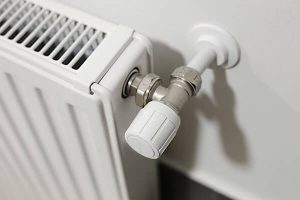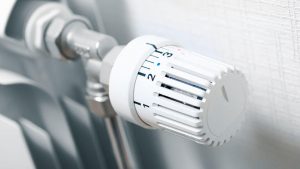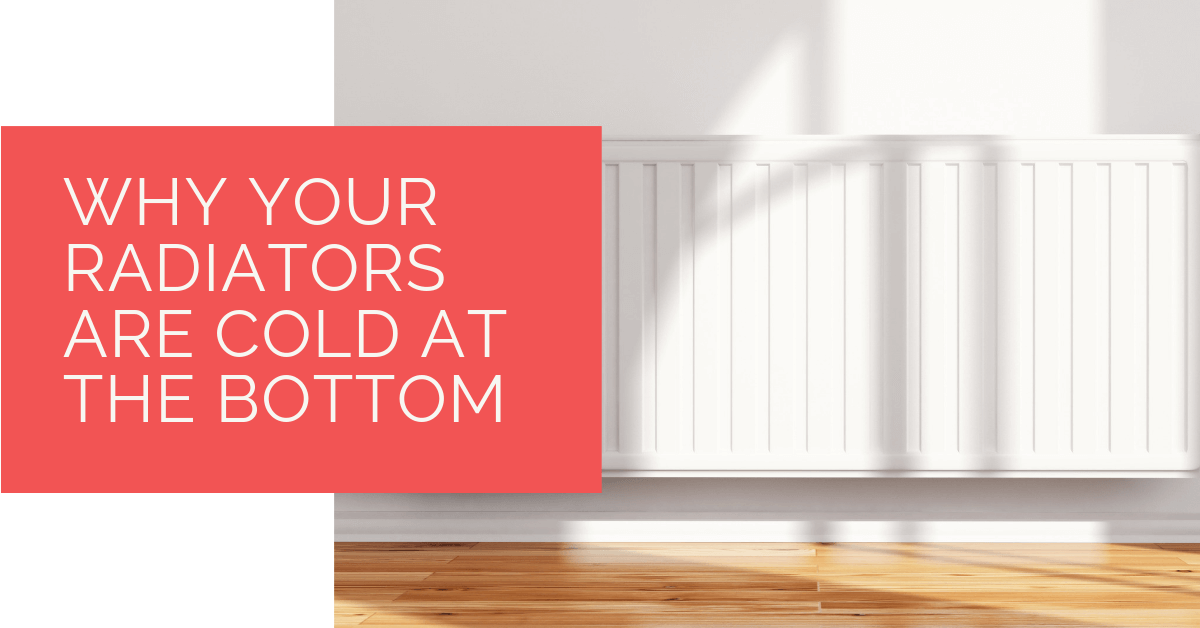Central heating systems are highly efficient, fine-tuned machines that are expected to appropriately regulate the property’s temperature. However, when issues start arising as time goes on, it becomes important to assess each part on its merit. This is why the topic of discussion here involves radiators and potential cooling at the bottom.
For those dealing with a radiator that is cold from the bottom, it’s time to assess what might be causing the problem.
Contents
- 1 Key Takeaways
- 2 Heating Sludge
- 3 Limescale
- 4 Contaminated Heating Water
- 5 How to Fix Cold Spots at the Bottom of Your Radiator
- 6 Case Study: Addressing Cold Radiator Issues in a Family Home
- 7 Expert Insights About Why Your Radiators Are Cold at the Bottom and How to Fix It
- 8 Heat Pump Source: Reliable Heating and Cooling Solutions
- 9 Final Thoughts
Key Takeaways
- Radiators that are cold at the bottom are often affected by heating sludge, which can develop due to limescale and contaminated water, leading to blockages and reduced performance.
- Limescale, resulting from natural minerals in hard water, can accumulate in radiators and impact their efficiency, especially in areas known for hard water.
- Contaminated heating water, caused by corroded components or external factors like dust, can degrade the central heating system and lead to the formation of thick sludge at the radiator’s bottom.
Heating Sludge
When the central heating pump pushes water back towards the radiator, it can have an impact on how the radiator ages. The radiator isn’t going to work well when the water isn’t properly filtered. This is a major concern for many property owners and it’s the reason their radiator starts to show signs of ageing.
If the radiator is cold from the bottom, it’s often associated with heating sludge that develops inside. This happens because of two specific reasons (limescale and contaminated water) and that impacts one’s system significantly. The heating system will not work as it is supposed to unless these problems are taken care of.
The reason heating sludge is such a prominent concern has to do with the impact it has on everything else. It doesn’t simply stay inside the radiator as the sludge starts to spread towards other components. These components include the microbore pipework, radiator valves, and sometimes of the radiator’s bottom. When the heating sludge starts to settle at the bottom, it becomes significantly colder and that’s the sign most property owners notice.
Since the heating sludge is inside the radiator, it starts to collect at the bottom and that leads to blockages. When there is a blockage at the bottom of the radiator, it pushes heat to the top of the part. This is why the bottom is always cooler to the touch and there’s a noticeable change in performance as well.
It’s important to note the change in temperature may not be noticeable until later on as more and more sludge packs in. This is why it’s smart to take notice as soon as possible as the temperature starts to change from warm to cold.
Most blockages aren’t severe and allow the radiator to function for a little while but eventually, the problem worsens. This is when a property owner will start to see signs of a serious blockage that continues to persist throughout the day. This restricts hot water from going through the radiator and leads to major signs of concern.

Limescale
The first reason involves limescale (i.e. natural minerals) that are found in the water. This is going to depend on where an individual is situated as certain areas are renowned for this problem. If the water being pushed through the system is “hard,” it is going to have a direct impact on how many minerals go through the radiator. This is when limescale develops.
To make sure this isn’t the root cause, it’s best to assess where the property is located and whether or not that area is known for its hard water. If yes, then this is likely the main troublemaker for the radiator. Please note, even if the property isn’t in an area with hard water, it’s still possible for the limescale issue to be a potential cause.
If the radiator has been giving issues for a long time, limescale can still be the main source of concern and it’s important to analyse the radiator in detail.
Contaminated Heating Water
The second most common reason for heating sludge developing in the radiator has to do with the water’s quality. For example, if the radiator is dealing with corroded components, the water is going to end up getting dirty. This is often possible in areas where there is a lot of dust and grime collecting.
Over time, the contaminated heating water ruins the central heating system and radiator leading to noticeable heating sludge. This continues to happen as more and more water goes through the system on a daily basis.
At first, it will simply be contaminated water but over time it does become thick sludge that ends up at the bottom of a radiator.
How to Fix Cold Spots at the Bottom of Your Radiator
If you’ve determined that your radiator is cold at the bottom, it’s crucial to address the issue promptly to restore efficient heating and prevent potential damage to your central heating system. The primary cause of this problem is usually the buildup of heating sludge, which can result from limescale and contaminated water. Here’s how to tackle the issue:
1. Flushing the Radiator
The first step to remedy cold spots caused by sludge buildup is to flush the radiator. This process involves draining the radiator of all water and then forcing clean water through it to remove the accumulated sludge.
Steps to Flush a Radiator:
- Turn off the heating system: Ensure the system is completely cool before starting.
- Close the valves: Shut off the radiator valves to prevent water from flowing.
- Drain the radiator: Attach a hose to the drain valve and open it, allowing the water to flow out.
- Flush the system: Use a hose to push clean water into the radiator until the water runs clear from the hose. This step helps dislodge and remove any sludge.
- Refill and bleed the radiator: Once cleaned, close the drain valve, reopen the radiator valves, and refill the system. Bleed the radiator to remove any trapped air.
If the sludge buildup is significant, this process may need to be repeated. For a more thorough cleaning, consider hiring a professional to perform a power flush, which uses specialised equipment to remove sludge from the entire heating system.
2. Treating Hard Water Issues
If you live in an area with hard water, installing a water softener can help prevent limescale buildup in your radiators. Limescale, which results from minerals like calcium and magnesium, can accumulate and cause blockages. A water softener removes these minerals, protecting your heating system from future issues.
3. Using Inhibitors
Adding a chemical inhibitor to your central heating system can help prevent the formation of sludge and limescale. These inhibitors work by neutralising the chemical reactions that lead to corrosion and sludge formation. It’s recommended to add inhibitors after flushing the radiator to keep the system clean.
4. Regular Maintenance
Regularly maintaining your heating system can prevent issues before they become significant problems. This includes:
- Annual servicing: Have a professional check and service your heating system annually to ensure it’s working efficiently.
- Bleeding radiators: Periodically bleed your radiators to release trapped air, which can reduce heating efficiency.
- Checking inhibitor levels: Ensure that the inhibitor levels are maintained to prevent sludge formation.
5. Professional Inspection and Repair
If the problem persists despite your efforts, it may be necessary to call a professional. They can assess whether there are more severe issues, such as damaged pipes or a malfunctioning pump, and recommend appropriate repairs.
By addressing these issues promptly and maintaining your heating system, you can ensure that your radiators work efficiently, providing consistent warmth throughout your home.

Case Study: Addressing Cold Radiator Issues in a Family Home
Background
A family residing in a suburban UK home contacted Heat Pump Source with concerns about inconsistent heating in their central heating system. The family noticed that their radiators were cold at the bottom, especially during the colder months, leading to discomfort and uneven temperatures across the house. This issue prompted them to seek a solution that would restore their system’s efficiency and ensure consistent heating throughout the property.
Project Overview
The primary objective was to diagnose and resolve the issue of cold spots at the bottom of the radiators. Our team aimed to identify the root cause, which was suspected to be due to sludge build-up or limescale, and implement a solution to restore the system’s efficiency. The project also included educating the homeowners on preventing such issues in the future.
Implementation
Diagnosis and Assessment
- Initial Inspection: Our technicians conducted a thorough inspection of the central heating system, focusing on the radiators, boiler, and pipework. It was confirmed that the issue was indeed due to sludge accumulation at the bottom of the radiators.
- Water Quality Testing: A water sample from the system was tested for hardness and contamination. The results indicated a significant presence of limescale and other particulates, confirming that hard water had contributed to the build-up.
Solution Execution
- Power Flushing: We performed a power flush on the entire central heating system to remove sludge, limescale, and other contaminants. This process involved using a high-velocity water flow with a chemical cleaner to dislodge and expel the sediment.
- System Inhibitor: After the power flush, we added a system inhibitor to the central heating system. This chemical treatment helps prevent future build-up of sludge and limescale by inhibiting corrosion and scale formation.
- Water Softening Solution: In response to the hard water issue, we installed a water softening device to treat the incoming water supply. This measure ensures that future water entering the system is softened, reducing the risk of limescale formation.
Post-Implementation Checks
- System Testing: After completing the cleaning and preventive measures, we tested the system to ensure all radiators were heating evenly. The cold spots at the bottom of the radiators were resolved, and the heating performance was restored.
- Homeowner Education: We provided the homeowners with a maintenance plan, including periodic system checks and the importance of using system inhibitors. We also recommended regular inspections to monitor the water softener and maintain the system’s efficiency.
Results
- Enhanced Heating Efficiency: The power flushing and subsequent treatments significantly improved the heating system’s efficiency. The family reported immediate and consistent warmth throughout the house.
- Energy Savings: With the radiators functioning optimally, the homeowners noticed a reduction in their energy bills, as the system no longer had to work overtime to achieve desired temperatures.
- Extended System Lifespan: The preventive measures implemented, including the use of inhibitors and a water softening solution, are expected to extend the lifespan of the central heating system by reducing the risk of future sludge and limescale build-up.
Summary
This case study demonstrates the importance of addressing underlying issues like sludge and limescale build-up in central heating systems. At Heat Pump Source, we provide comprehensive solutions to ensure your heating system operates efficiently and reliably. Through our expert diagnosis and preventive measures, we restored the family’s heating comfort and helped them achieve long-term energy savings. Regular maintenance and proactive measures are essential to preventing similar issues, ensuring consistent warmth and system longevity.
Expert Insights About Why Your Radiators Are Cold at the Bottom and How to Fix It
A common issue we encounter is radiators that are cold at the bottom, often due to sludge build-up. This sediment can significantly reduce the efficiency of your heating system, causing uneven heating and higher energy bills.
Senior HVAC Technician
Regular maintenance, including power flushing, is crucial to prevent limescale and sludge from accumulating in your radiators. It not only improves performance but also extends the lifespan of the system.
Heating System Specialist
Identifying whether the issue is due to limescale or contaminated water is key. In areas with hard water, using a water softener can help prevent limescale build-up and ensure your system runs smoothly.
Technical Support Manager
Heat Pump Source: Reliable Heating and Cooling Solutions
At Heat Pump Source, we take pride in our unwavering commitment to serving the UK with top-tier HVAC solutions. From the efficiency of heat pumps and the cool relief of air conditioning to the warmth of boilers, radiators, and underfloor heating, our dedicated team is always at the forefront of innovation. We understand the unique needs of every household and business, and we strive to provide dependable health and cooling products and services that are tailored just for you. Ensuring your comfort and satisfaction is our utmost priority. Whether you have questions, need guidance, or require support, we’re always here to assist. Please don’t hesitate to contact us; we’re eager to be of service.
Final Thoughts
Before making a decision, it’s important to assess the problem in detail and truly understand what the root cause is. Remember, each situation is going to be different and the main problem area could vary. Instead of assuming the problem is the same as others, it’s important to take a proper look into what’s going on. After doing this, it’ll become easier to come up with a viable strategy.
In general, the reasons listed above are commonly the cause of why a radiator has started to go cold. It’s smart to focus on the solution once this determination is made as it will help push things along and bring the central heating system back to full power.
About the Author
At Heat Pump Source, our articles are the product of a collaborative effort among a team of highly skilled HVAC experts. Our dedicated professionals, hailing from diverse backgrounds in heating, ventilation, air conditioning, and refrigeration, contribute their extensive knowledge and experience to every piece of content. This multidisciplinary approach ensures comprehensive coverage. Our commitment is to deliver authoritative, reliable, and tailored advice to meet the unique needs of every household and business across the UK.

